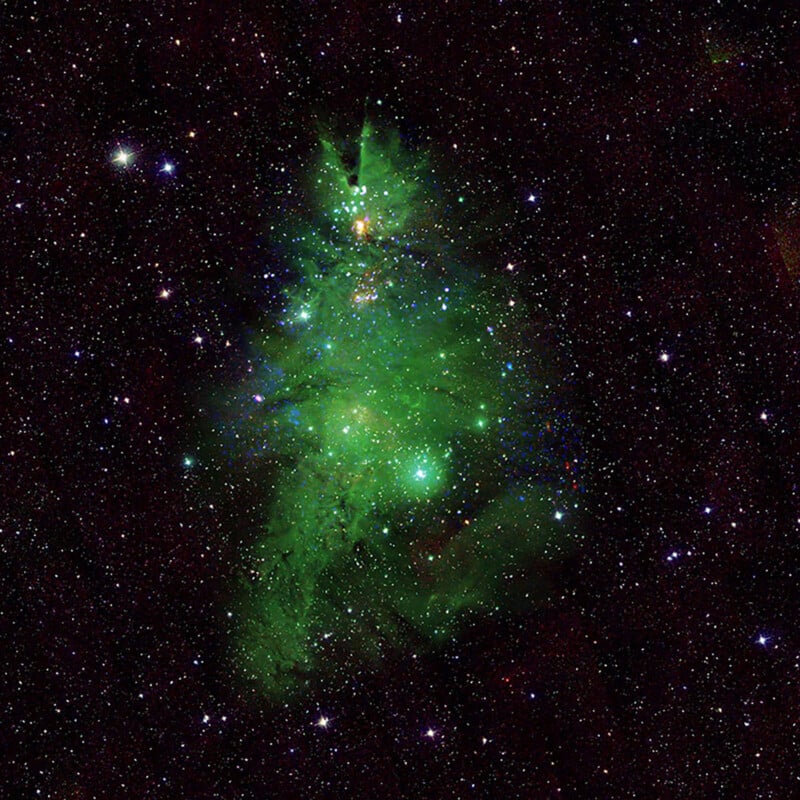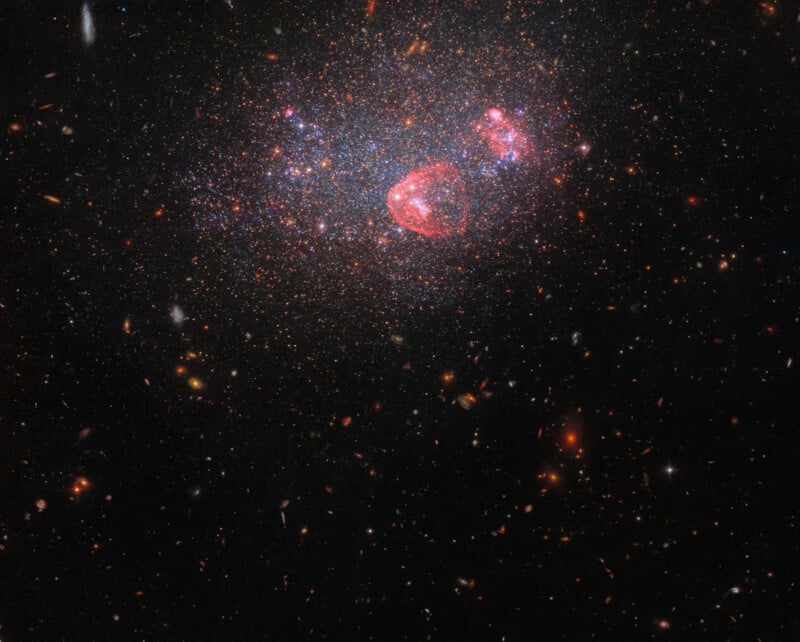![]()
Hubble is celebrating the holidays in style. The Hubble Space Telescope team is shedding light on Christmas-themed celestial objects, including the “Christmas Tree Cluster” and an ornament-shaped galaxy.
NGC 2264, the “Christmas Tree Cluster,” shows a “cosmic tree with the glow of stellar lights,” explains NASA. NGC 2264 is a cluster of young stars aged between one and five million years, about 2,500 light-years from Earth within the Milky Way. The stars in NGC 2264 range in size from less than a tenth of the Sun’s mass to others that are seven solar masses.

To create the Christmas tree motif, image processors carefully selected color and rotation for the new image of NGC 2264. The blue and white lights, which even blink in a special animated version seen below, are young stars that emit X-rays detected by NASA’s Chandra X-ray Observatory.
![]()
Optical data from the National Science Foundation’s WIYN 0.9-meter telescope on Kitt Peak shows gas in green. The foreground and background stars shown in white were detected in infrared by the Two Micron All Sky Survey. The image has been rotated clockwise by about 160 degrees from the standard, which is North pointing upward.
The irregular dwarf galaxy UGC 8091 has been imaged by Hubble’s Wide Field Camera 3 and the Advanced Camera for Surveys and looks like a “shining tangle of string lights,” says NASA.

The galaxy is about seven million light-years from Earth in the constellation Virgo. A dozen camera filters were used to create this Christmas photo, including light from the mid-ultraviolet range to the red end of the visible spectrum. Hubble captured the necessary data in surveys from 2006 to 2021.
“The red patches are likely interstellar hydrogen molecules that are glowing because they have been excited by the light from hot, energetic stars. The other sparkles on show in this image are a mix of older stars. An array of distant, diverse galaxies appear in the background, captured by Hubble’s sharp view,” NASA explains.
